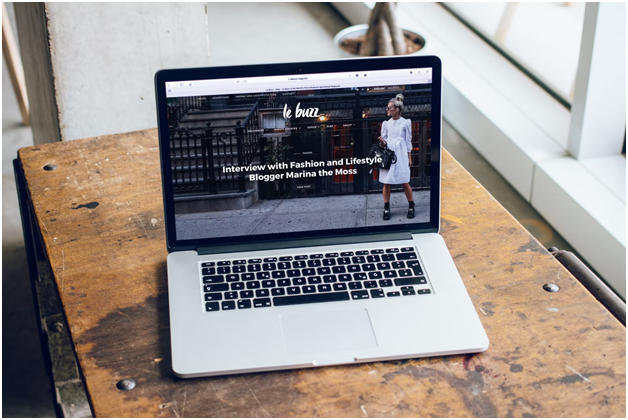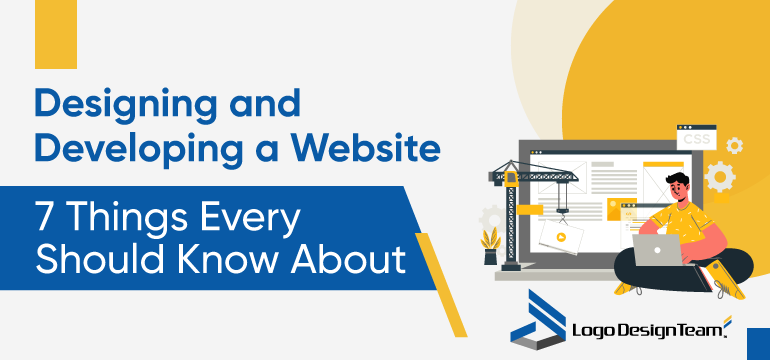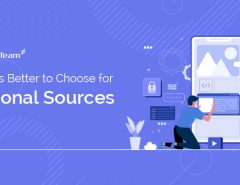Having a successful website can be a great investment for individuals and companies alike since it offers various benefits, like increasing visibility, credibility, and brand awareness.
However, the website building process can be quite demanding. For instance, a website owner might find it challenging to design the website, choose the right website platform, and maximize its performance.
Therefore, this article will cover seven aspects to consider to help you create and design your website. Let’s get started.

1. Website Purpose
Identifying the website’s purpose helps you develop ideas of what your website should look like, which helps make the website-building process more effective.
The website’s purpose should align with your objectives of creating the website. For example, if you want to build a brand identity, attract prospective clients, and earn more sales, you’ll likely build an eCommerce site or a business website.
Moreover, there are several best practices to consider when deciding your website purpose, such as:
- Find the target audience. Discover what your target audience needs or is interested in to help gather some ideas. If you’re creating an online store, you can also narrow down the business scope or choose a niche with fewer competitors.
- Think like an end-user. Shift your perspective as an end-user to help identify what attracts website visitors to click on links and spend time reading content. In other words, match your website with your audience’s expectations.
- Analyze the competitors. Find your website’s competitors and discover what makes their sites stand out. For instance, their web pages have enticing calls to action (CTA). Use the information gathered from the analysis to your advantage by offering visitors a better experience on your website.
2. Web Hosting
Web hosting and a domain name are fundamental for any website. Nowadays, numerous web hosting companies are available, but choosing the best hosting provider for your website is crucial.
There are several factors to consider to help you pick the right web hosting service:
- Pricing and features. This will vary from one web hosting provider to another. So, it’s important to find one that offers the best value for money.
- Scalability. Find out whether you can easily scale your web hosting plan or transfer hosting to another provider.
- Customer support. Check whether the web hosting provider has reliable customer support. This is helpful in case you experience technical difficulties.
3. Domain Name
A domain name can help represent your website’s purpose. Having a good domain can also add professional credibility, improve your site’s search engine optimization (SEO), and attract your target audience.
See the following tips to brainstorm ideas when picking a domain name:
- Use a brandable domain name. Consider incorporating your brand name in the domain to make it stand out from other websites.
- Insert a keyword related to your business. Try using a keyword in the domain that represents your brand to help visitors find your website easily.
- Make it concise. Create a domain name that consists of a maximum of two phrases, as it will be easier to remember.
4. User Interface and Experience
User interface (UI) and user experience (UX) are two different terms, but they are both crucial to help make a website look more credible and professional.
The user experience represents how users feel when interacting with a website. It relates to the site’s usability, functionality, and responsiveness.
Meanwhile, the user interface is associated with visual web elements, such as web design, navigation, input control, and imagery.
Having a great UI and UX is beneficial as they can improve lead generation, conversion rates, and customer loyalty.
The following are several tips to improve a website’s UI and UX:
- Know your audience. Focus your research on areas such as users’ demographics and preferences to gain insight into how your user interface design should look.
- Make it simple. A simple yet responsive web design is key to achieving a smooth user experience. Consider eliminating unnecessary or intrusive website elements like popups.
- Add more whitespace. Whitespace can change the overall look of your website and help streamline the site design to reduce distractions.
5. Website Platform
Another important aspect to consider, especially if you’re learning how to create a website from scratch, is choosing the right website platform. There are two main types of platforms available – a content management system (CMS) or a website builder.
Most content management systems like WordPress, Drupal, and Joomla are self-hosted and open-source, meaning they are free to install and use. Additionally, web professionals can make contributions to improve CMS functionalities.
CMSs offer various comprehensive features, such as:
- Backup tools
- Plugins
- Responsive themes
- Content editing and publishing tools
- SEO capabilities
On the other hand, website builders are an all-in-one hosted solution that focuses on ease of use. A website builder is a great choice for beginners who want to build a new website in just a few clicks.
Unlike CMSs, however, most website builders are premium solutions. Prices also differ depending on the provider and the plan you choose.
Some common features of website builders include:
- A drag-and-drop editor
- Customizable templates
- A mobile-view editor
- Built-in SEO and analytic tools
6. Mobile Responsiveness
Mobile devices play a significant role in global online traffic, contributing 47% of internet traffic. This indicates that many users prefer using their mobile devices to visit websites.
Therefore, having a mobile-friendly website is crucial to boosting traffic. Moreover, search engines prefer websites with responsive design, meaning that this can increase your chances of ranking high in search engine results pages (SERPs).
Here are several best practices to ensure that your website is mobile responsive:
- Check your website from a mobile device. The easiest way to know whether your website is mobile-friendly is by accessing it from a smartphone or tablet. Then, navigate the web pages to see if the content appears as expected.
- Choose a responsive theme or template. Most CMSs and website builders provide themes that make your site mobile-friendly.
- Apply readable fonts. As smartphones and tablets have smaller screens than desktops, you need to ensure the readability of your fonts by checking them on both desktop and mobile versions.
- Use a mobile-friendly test tool. Check the responsiveness of your website with a mobile-friendly test tool, such as Google Mobile-Friendly Test.
7. Website Performance
Optimizing website performance is crucial to ensure a positive user experience. The most notable factors for this are site speed and uptime.
Site speed refers to how fast your website loads or how quickly users can interact with its content. Website owners can assess their site speed by implementing various practices:
- Check Google PageSpeed Insights. This tool helps analyze your site speed on both mobile and desktop versions. Use the results from PageSpeed Insights to make improvements to your site.
- Optimize images. Using high-quality images is important, but they might have large file sizes that negatively affect site speed. So, consider resizing or compressing images, but make sure that the quality is not affected.
- Use a private or dedicated hosting server. Your web server can also affect website speed. For increased performance reliability, opt for a dedicated hosting plan that provides more resources, larger bandwidth, and faster processors.
Meanwhile, site uptime refers to the availability of a website at any given time to be accessed by users. Your web hosting is the most important factor that affects site uptime. So, we recommend using a reliable web hosting provider that guarantees 99.9% uptime.
You can perform real-time web performance monitoring using a website analytics tool, such as Google Analytics. Additionally, schedule regular website maintenance to ensure overall web performance.
Conclusion
Building a website might not be an easy task, but this article has shared various aspects about creating a website to help you begin your web development project.
To wrap up, the following is a recap of seven tips you should consider when building and designing a website:
1. Identifying your website purpose
2. Choosing a web hosting provider
3. Creating a good domain name
4. Optimizing user interface and experience
5. Picking a website platform
6. Optimizing your website for mobile
7. Ensuring web performance
Implement these practices to improve your website’s quality and ease your website-building process. Good luck!




